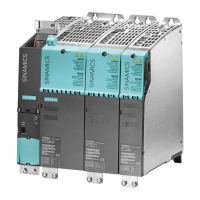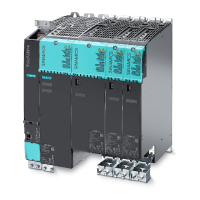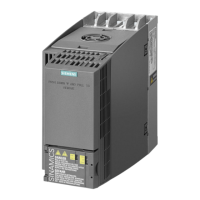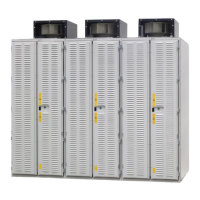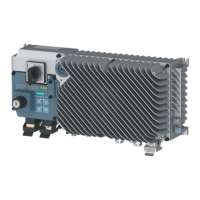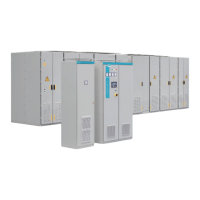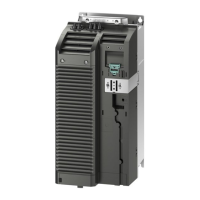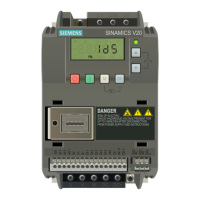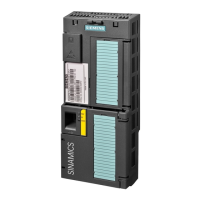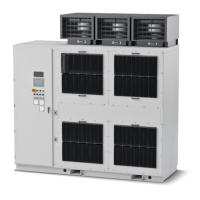Fundamental Principles and System Description
Engineering Information
SINAMICS Engineering Manual – November 2015
Ó Siemens AG
135/528
The DC link voltage V
DC Link
of the inverter is itself depending on three influencing variables,
· the line supply voltage V
Line
of the drive,
· the type of Infeed (Basic Infeed / Smart Infeed or Active Infeed), and
· the operating conditions of the drive (normal motor operation or braking operation using
the V
DC max
controller or a braking unit).
The type of Infeed determines the relation between the DC link voltage and the line voltage.
The Basic Infeed used with G130, G150 and as S120 Basic Infeed, as well as with the S120 Smart Infeed, provides a
DC link voltage which, in normal operation, is typically higher than the line supply voltage by a factor of between 1.32
(full load) and 1.35 (partial load)
V
DC Link
/ V
Line
≈ 1.35
Active Infeeds which are used on the S150 and as S120 Active Infeed (self-commutated IGBT inverters) operate as
step-up converters and the DC link voltage always needs to be controlled to a value higher than the amplitude of the
line voltage. The ratio V
DCLink
/ V
Line
must therefore always be greater than 1.42. The ratio V
DCLink
/ V
Line
can be
parameterized on Active Infeeds. The factory setting is
V
DC Link
/ V
Line
= 1.50
This setting should not be changed without a valid reason. Reducing the factory-set value tends to impair the control
quality while increasing it unnecessarily increases the voltage on the motor winding.
The operating conditions of the drive also influence the DC link voltage, particularly on drives with Basic Infeeds. As
these cannot regenerate energy to the power supply system, unlike Smart or Active Infeeds with regenerative
feedback capability, the DC link voltage level rises when the motor is braking. To prevent shutdown on over-voltage
in the DC link, it is often necessary to activate the V
DC max
controller or to use a braking unit on drives with a Basic
Infeed. Both of these mechanisms limit the rise of the DC link voltage level during braking.
The V
DC max
controller performs this function by manipulating the deceleration ramp. It increases the deceleration time
to a value at which the drive only generates as much braking energy as can be converted to heat by the drive power
losses.
The braking unit limits the DC link voltage level by converting the generated braking energy into heat in the braking
resistor.
The DC link voltage level which represents the activation threshold or the operating range for the V
DC max
controller
and the braking units is virtually identical for both mechanisms and is approximately 20 % higher than the DC link
voltage level on drives operating in motor mode with a Basic Infeed.
The reflection factor r is defined as the ratio between the peak value V
PP
of the phase-to-phase voltage at the motor
terminals and the DC link voltage V
DCLink
of the inverter:
r = V
PP
/ V
DC Link
On drives in the output power range of a few kW, the impedance ratio Z
W Motor
/ Z
W Cable
is so high that at maximum
reflection a reflection factor of r = 2 must be expected. However, as the drive rating increases, the impedance ratio
Z
W Motor
/ Z
W Cable
becomes more favorable, which means that at maximum reflection the reflection factor to be
expected on drives of > 800 kW is only r = 1.7, as illustrated by the diagram below.
Typical reflection factor at the motor terminals as a function of drive power rating
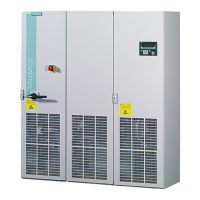
